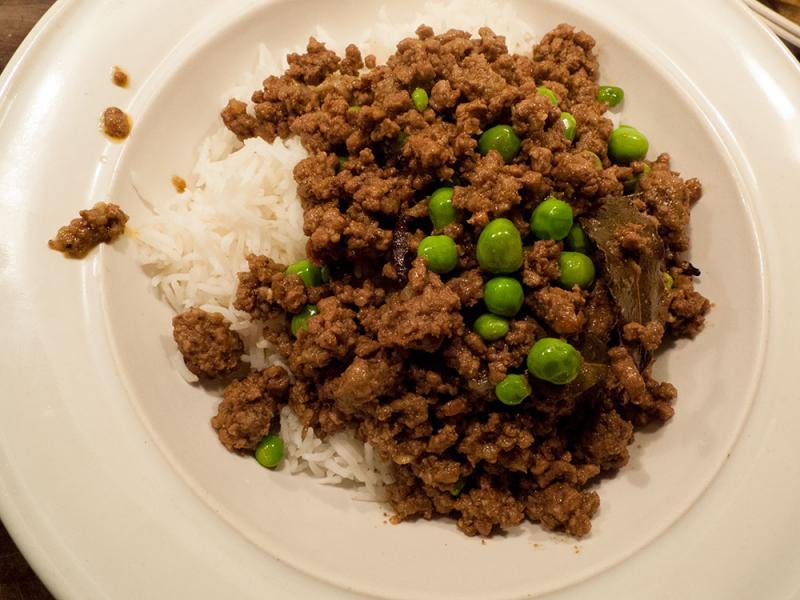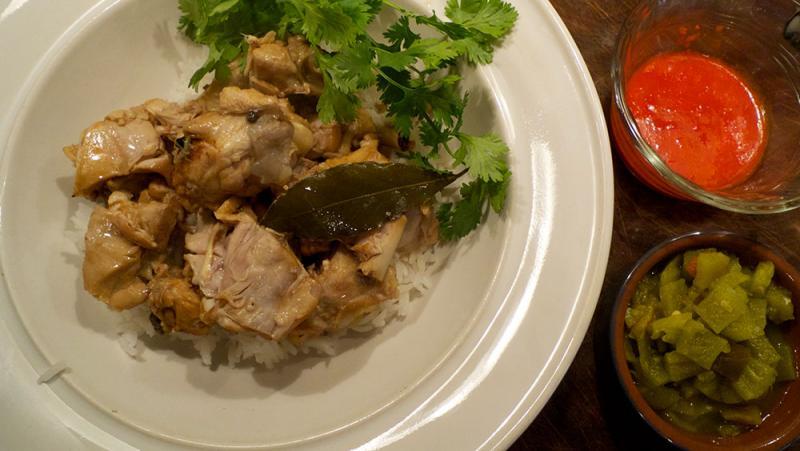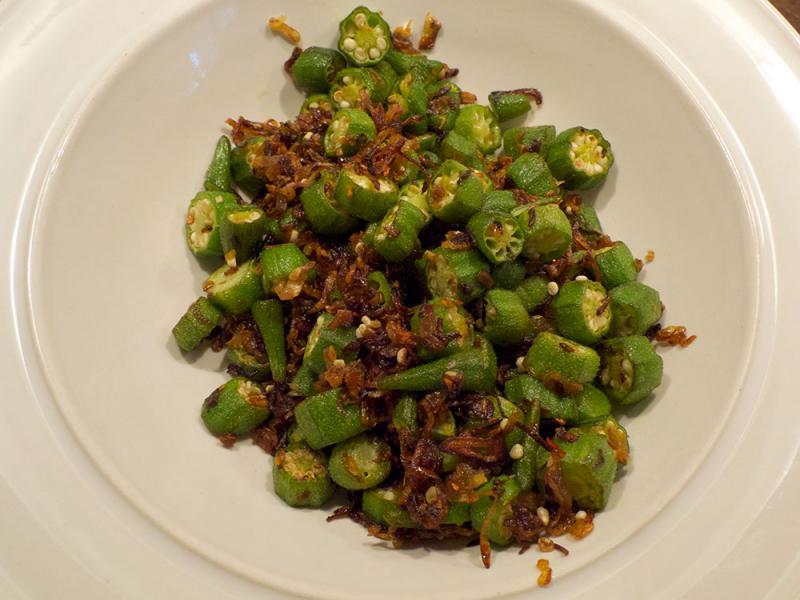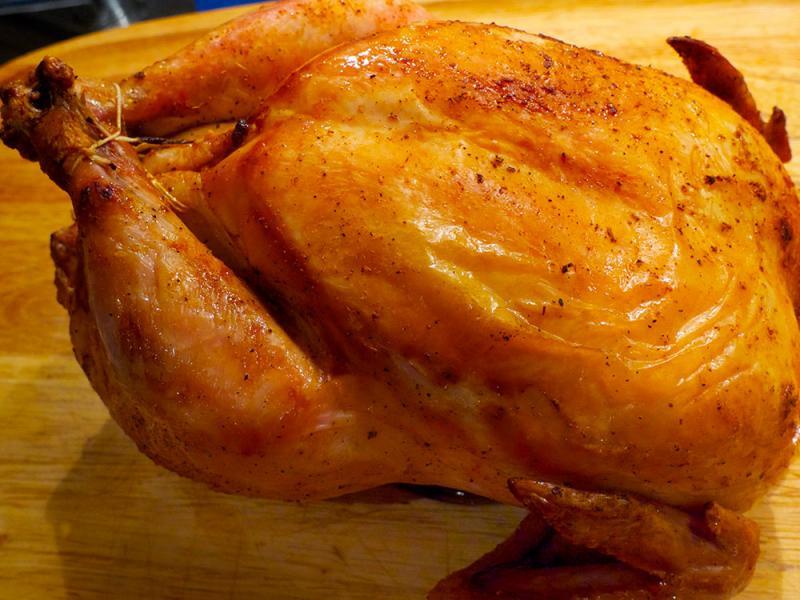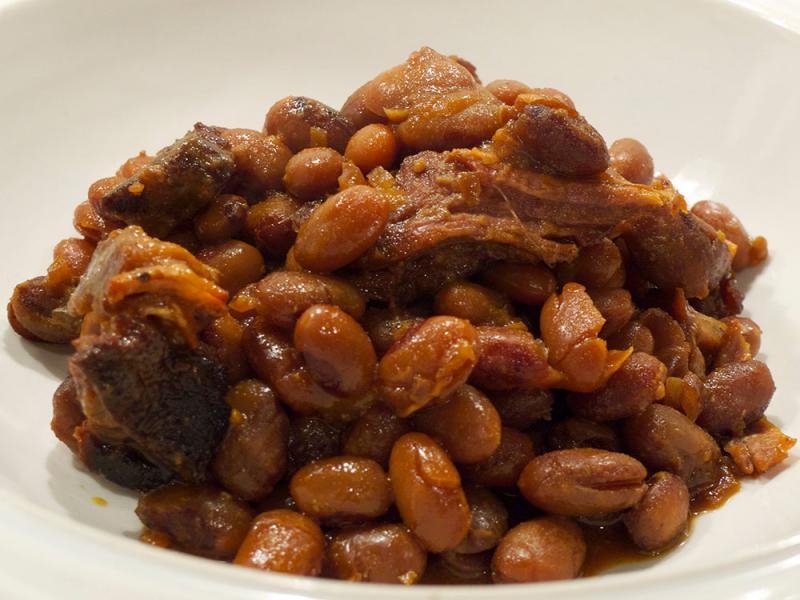-
Posts
1,824 -
Joined
-
Last visited
Content Type
Profiles
Forums
Store
Help Articles
Everything posted by patrickamory
-
liuzhou, thank you - very useful. Wikipedia does claim that "Cinnamomum burmanii is native to Southeast Asia and Indonesia." By pointing to the Latin name, are you suggesting that it more commonly comes from Burma? I'm able to find Ceylonese cinnamon here in the US, but the other kind is far more common. The naming conventions are incredibly confusing - if Cinnamomum burmanii is cassia, then what is Chinese cassia, otherwise known as C. cassia?
-
As I'm sure everyone here knows, there are three major families of the spice commonly called cinnamon: Ceylon cinnamon (cinnamomum verum), Indonesian cinnamon (cinnamomum burmanii) and cassia or Chinese cinnamon (cinnamomum cassia). http://en.wikipedia.org/wiki/File:Cinnamomum_Verum_vs_Cinnamomum_Burmannii.jpg (in the link above, Ceylonese cinnamon quill on the left, Indonesian cinnamon stick on right) My question is which cinnamon to use in SAVORY applications outside the country of origin. I believe that Ceylonese cinnamon, which comes in flaky quills, is the norm in Moroccan and Mexican cuisine? Should it be used in northern Indian cooking, or should Indonesian be used there? And is Indonesian cinnamon the norm throughout Southeast Asia - e.g. in Malay or Nyonya cooking, where one might expect Chinese or Vietnamese (Saigon cinnamon) instead? So many recipes just call for "cinnamon" and would be nice to have a better guide of which sort to use. (Not interested in baking / sweet uses for the purposes of this thread.)
-
Thanks liuzhou this is really great. Please do keep it up!
-
The vegetable oil I buy is marked as soybean oil. Grapeseed oil is somewhat expensive - particularly for deep-frying. Also I believe it is usually heat-extracted with hexane - something that should be avoided if I understand correctly?
-
What cooking oil do you use? I don't mean specialized oils or fats for certain purposes - butter for Northern European, olive oil for Mediterranean, ghee for Indian, manteca for Mexican, rendered pork fat or lard for Thai and some Chinese. I mean - what is your generic cooking oil - for when any of the above adds more character than you want from your fat? Many people recommend peanut oil but I can't stand it - it reminds me too much of peanut butter, one of the few foods I simply will not eat. I have been using "vegetable oil" (i.e., soybean oil) in recent years, and now I read that being highly processed, and probably from GM soybeans, it may not be good for me. I'd be happy to use coconut oil for many applications, but it's extremely expensive. Works very well nonetheless in Southern Indian and many Southeast Asian dishes. I'm not sure it would be appropriate for most mainland Chinese dishes, however. And when it comes to deep frying, and you need a quart or more of oil - what are you going to use?
-
-
This is the best thread ever … how did I miss it?? Thanks basquecook!
-
I've had Padaek at this place in Tribeca when the guy's Lao sister cooks a secret menu some nights. It is unreal how tasty it is. I want to try making it! http://www.seriouseats.com/2014/05/how-to-cook-lao-food-like-a-pro-mangez-avec-moi.html
-
huiray wow that looks good. I'm a big fan of nyonya cuisine when I can find out. Blether another blazer I bet. How dark, rich & soury does that look? Very. Those shortcuts are not available here. I see a lot of sautéing onions in my future. Bovril, on the other hand, is easily available. And I do have a huge amount of highly reduced beef stock in my freezer. Now I just have to convert some of your weight instructions to volume (or more likely just play it by ear).
-

How have your food habits changed over the years?
patrickamory replied to a topic in Food Traditions & Culture
I'm not sure my eating habits have changed significantly, at least since I started cooking regularly at home (a 2006 New Year's resolution). NYC living encourages eating out and ordering in, which in excess is not healthy, satisfying or thrifty. Since I started cooking most meals at home, I'm sure I'm eating less bread and less sugar, though probably the same amount of butter, olive oil and salt. In general I gravitate toward one-pot meals, which means my carb intake is primarily rice of some kind. I used to have a McDonalds guilty pleasure. That has waned as I've progressed through my 40s, though I also have a theory that the food there has gone downhill drastically. I also for many years started the day off with a bagel or bialy with cream cheese. Gone. Now just coffee in the morning. First food of the day is lunch. I've never really been hungry upon waking up. I realize that this is completely the opposite of many people. -
Too much good food to call out in detail! Thanks to Soba for guiding me through this delicious recipe for chicken adobo. Served with Burmese stir-fried okra and shallots. With a couple of salsas (one Hatch, one habanero), steamed jasmine rice and a cold beer, just a perfect meal for this balmy spring evening.
-
Hi andie, I bought that cookbook recently and although it's fascinating, I haven't had much luck with the recipes. I've found them under seasoned and possibly under fatted Please let me know what you've made from it that works! Patrick
-
basquecook where did you source the steak?
-
For those of you in the US (and possibly elsewhere - I just don't know gets imported) - can I recommend Ortiz anchovies in the glass jar? Especially the Ortiz "stilla antigua"? http://www.amazon.com/Ortiz-Anchoas-Antigua-Anchovies-Anchovy/dp/B0076ZQNIA So good - I just had to run into the kitchen and eat some from the jar - they're THAT good...
-
Anna OMG that's what I'm talking about… a perfectly put-together sandwich is always going to be my favorite thing!
-
Roast chicken. Prepared via the Hazan method which means trussing. I know there are disputes about this, but my roast chicken comes out with perfectly cooked white and dark meat every time - the former is juicy and flavorful, the latter just done. I wonder whether the need for spatchcocking and all that stems from using modern chickens which are bred for larger breasts and thus have that real imbalance between the white and dark meat? In any event, whether it's my chicken (small, New York farm-raised, with normal-sized breasts), or the method (Hazan, started upside-down with self-basting lemons, and trussed tight), I urge you to try this one. Here's my adaptation of Hazan. 1 chicken - preferably not stuffed with antibiotics & big breasted - 3 1/2 lbs 2 1/2 tbs kosher or sea salt 3/4 tsp freshly ground black pepper 1/2 tsp sweet paprika 1/2 star anise, ground 3+ Sichuan peppercorns, toasted for 2 minutes till fragrant, and ground 2 small lemons butchers' twine and trussing needle If possible, start 4-6 hours before cooking. Remove giblets and save for whatever. Pat chicken thoroughly dry with paper towels, inside and out, and place on a cookie rack over the roasting pan (I use an oval glass baking dish that is just the size of the bird). Combine all dry ingredients thoroughly and rub chicken all over with the mixture, inside and out. Set on top of rack over roasting pan and refrigerate 4-6 hours, in an area of the fridge where the air can circulate all around the chicken. When ready to cook: preheat oven to 350 F. Remove chicken from fridge; discard any liquid at the bottom of the roasting pan. Remove cookie rack and place chicken directly in pan. Take each lemon and roll back and forth on the counter top, using flats of both hands if necessary, so that all the juice inside gets free of the segments. (Some liquid may leak on to the counter top.) Place each lemon sequentially in a bowl and pierce at least 20 times all over with the trussing needle. Make sure to pierce the ends (more difficult) as well as the sides of the lemons. Place both lemons inside the chicken's cavity. Thread your trussing needle and sew up the cavity. You may have to stretch the skin and pope's nose to squeeze around the second lemon, which will be poking out. Try to sew as tightly as possible. Now sew the neck cavity shut. Finally, tie the two drumsticks together tightly above the point of the breastbone, one atop of the other. Turn the chicken upside-down (legs on the bottom). Place in center of oven for 30 minutes. Remove from oven, turn the chicken right side-up. Cook for another 30 minutes. Now, raise temperature to 450 F and cook for another 20 minutes. Remove from oven. Resting doesn't seem to make a huge difference unless you're just short of being done - it will help get the breast meat just right if it's slightly rare on the very inside. I don't find that internal thigh temperature is a great guide here because what you're really trying to do is get the breast meat right, and that can vary. You have to use your sense of whether it's done. The breast will go from underdone to overdone in a very short time. When carving, make sure you save the internal juices that come out to pour over the chicken. I like to serve with white rice and pour the juices into it. The pan juices, alas, will be too salty to use, so discard those. Also discard the lemons inside the chicken - the juices will have become bitter - and serve the chicken and rice with fresh lemon slices. Notes (most of the following is conjecture): - the paprika adds a wonderful bronze color in addition to flavor - use good fresh paprika - the salted refrigeration step is essentially a "dry brine" and tightens the skin - the Sichuan peppercorns and star anise add depth of flavor - very background but great - the upside-down cooking the trussed bird with the rolled pierced lemons self-bastes the breast - the final 20 minutes gives you that wonderful crisp breast despite the upside-down stage - for a 3-lb chicken, do 30 mins, 25 mins and 20 mins - for a 2 1/2 lb chicken, do 25, 25 and 20 - generally, think 20-25 mins per lb, but keep in mind this method doesn't work well for much larger than 4 lb chickens, and probably not for the big-breasted ones It may sound complex but it really isn't. I make this all the time including on weekdays. It's a real staple in our house and I've rarely had better roast chicken. Trust Marcella! (I've made quite a few tweaks to the original over the years, but the basic method is the same.)
-
Larb is one of the greatest things ever. Slightly tangential: did anyone catch the review of the Laotian restaurant on Serious Eats this week? http://www.seriouseats.com/2014/05/how-to-cook-lao-food-like-a-pro-mangez-avec-moi.html I am now officially fascinated with padaek, thick Laotian fish sauce.
-
This is incredible and fascinating, thanks liuzhou - please keep it coming. Selected recipes adapted by yourself, if you're up for it, would be very welcome as well.
-
Yummy… fiddleheads
-

15th Anniversary trip to NYC – Looking for a special meal
patrickamory replied to a topic in New York: Dining
Mitch - reasonable people may choose to disagree. But my dining companions and I at Le Bernardin last week decided to order double appetizers and double mid-courses in order to get enough food. That raised the price substantially above 11 Madison. For a special occasion, the room at Le B is in a rather blah '90s building, lavishly decorated but without much taste. At least the seating is comfortable. Nonetheless at 11 Mad you're sitting in spectacular Art Deco surroundings. The food at Le Bernardin was excellent of course. And if the OP is specifically searching for seafood then that should probably be the choice. -

15th Anniversary trip to NYC – Looking for a special meal
patrickamory replied to a topic in New York: Dining
Agree with Mitch. Hearth is not a special occasion restaurant. His recommendations will definitely give you what you're looking for. I think 11 Madison Park is even better than any of them, but is definitely above your budget… still, with no alcohol, maybe you could make it work? Incredibly beautiful room as well. And for the money - a lot more food. -
Way too many delicious meals to call out. Incredible spring cooking everyone! I celebrated the end of winter with a winter dish, my favorite that I've discovered through this site, janeer's baked beans...
-
Kim the onion rings do look perfect but so do the burgers. Love the double thin patties. Looks like you get crispy bits around the edges?
-
Anna simple and heavenly.
-
I recently got some very potent peppercorns in a market in Flushing (NYC). I use them for Sichuan dishes, but I suspect they have hidden versatility. Add a small quantity of toasted ground Sichuan peppercorns to your spice rub for Marcella Hazan roast chicken, for example (I also add paprika and ground star anise to the basic salt and pepper combination).


